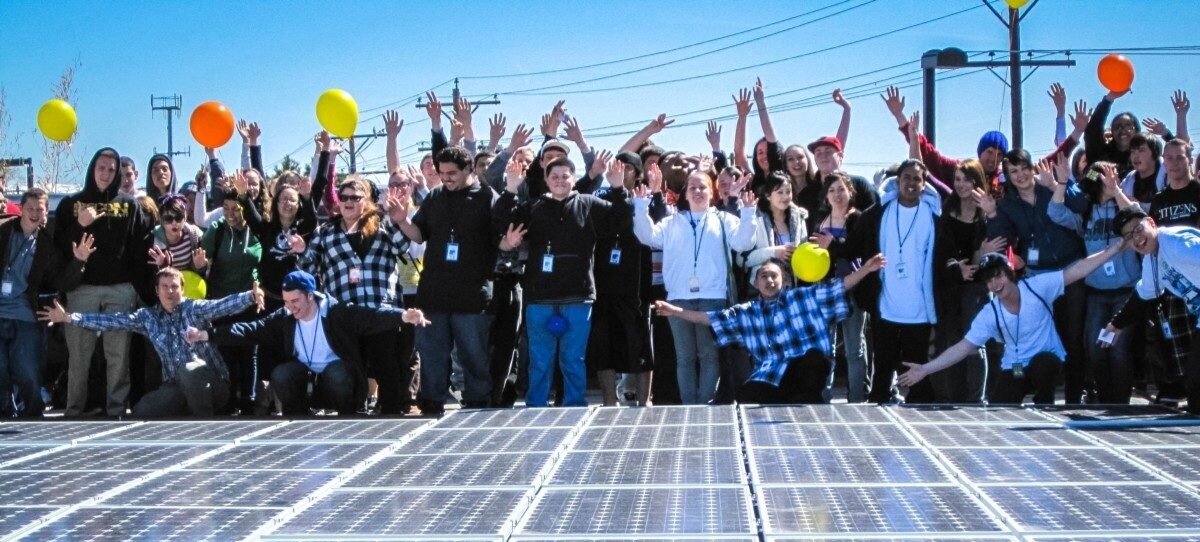Local Solar Roadmap
Savings. Jobs. Health.
Utilities are using traditional models to justify expensive investments in underutilized utility assets. But there’s a better way. A new planning tool that uses more and better data, analyzes the total costs of the energy we put on the grid, and accurately values local solar + storage can help regulators make informed decisions about the right energy mix and save ratepayers a half a trillion dollars.

273 GW OF LOCAL SOLAR + STORAGE =
$473B SAVINGS. OVER 2M JOBS. THE CLEANEST, LOWEST COST GRID.
The Results
247 GW of local rooftop and community solar
Deploying at least 247 GW of local rooftop and community solar on the grid would be the most cost-effective way to transition to a clean energy system by 2050. It is also the most cost-effective way to reach 95% emission reductions from 1990 levels.
We can save ratepayers $473 billion
Under a national 95% clean electricity target, leveraging expanded local solar and storage can save the U.S. $473 billion by 2050 compared to a clean electricity grid that doesn’t expand local solar and storage.
A clean grid can be $88 billion cheaper than doing nothing
A clean electric grid that leverages expanded local solar and storage is $88 billion less expensive than a grid that does nothing different than we’re doing today (no clean electricity mandates and not leveraging expanded local solar and storage).
798 GW of utility-scale solar and 802 GW of utility-scale wind
The lowest cost grid requires a lot more utility-scale solar. In fact, retiring fossil-fueled power plants that run infrequently and deploying local storage more efficiently will help integrate 798 GW of utility-scale solar and 802 GW of utility-scale wind by 2050.
Over 2 million local jobs
The cost analysis accounted for direct costs and benefits only, but local solar and storage brings additional societal benefits to communities such as jobs, increased economic development, increased resilience, and more equitable access to the benefits of renewables.

Your state energy regulators need to hear from you. Ask them to commit to using better planning tools that analyze the total cost of energy resources and properly calculate the value of local solar + storage. This will save us money, create jobs and protect healthy air.
Experts Weigh In
“I found your work to be brilliant and it attempts to address many of the serious challenges in the industry for valuing “local” resources and conducting holistic grid planning. The data granularity is impressive and I hope there is a way to expand your model to islands, such as Hawaii.”
— Jennifer Potter, Commissioner at Hawaii Public Utilities Commission
“Finding the right way to plan a system driven by integrating flexible, clean and affordable DERs has proven elusive for grid operators and developers alike. The Local Solar Roadmap offers a breakthrough means of charting a path towards a system that is more efficient, flexible, and resilient for everyone.”
— Jonathon Monken, Principal at Converge Strategies and Former Sr. Director of Resilience, PJM Interconnection
“This study breaks important ground with an approach to quantify the cost savings opportunities of distributed energy resources in a rapidly decarbonizing power system.”
— Mark Dyson, Principal, Rocky Mountain Institute
“Traditional planning models that analyze the grid in piecemeal fashion have resulted in overbuilding the grid with underutilized utility assets that are unnecessarily costing our country hundreds of billions of dollars. This study proves that empowering consumers with cost-effective technology requiring utility permission can save the country hundreds of billions on top of enormous societal benefits.”
— Jigar Shah, Co-Founder and President of Generate Capital

Planning decisions are too important to base solely on the output of a single model selected and run by the plan’s proponent. Ask your state regulators to pledge to incorporate new models that properly account for the costs and benefits of local solar + storage.
About the Roadmap
Right now, utilities are using outdated planning tools to decide which energy resources to build to meet our growing demand. On the current trajectory, we're destined to continue to over-invest in dirty fossil fuels and underutilized assets, costing us billions along the way.
A new tool developed by Vibrant Clean Energy uses modern technology to calculate how to build the lowest cost energy system to meet our clean energy goals.
By using more and better data, total system planning, and properly accounting for the costs and benefits of local solar and storage, our energy regulators can do the same.






